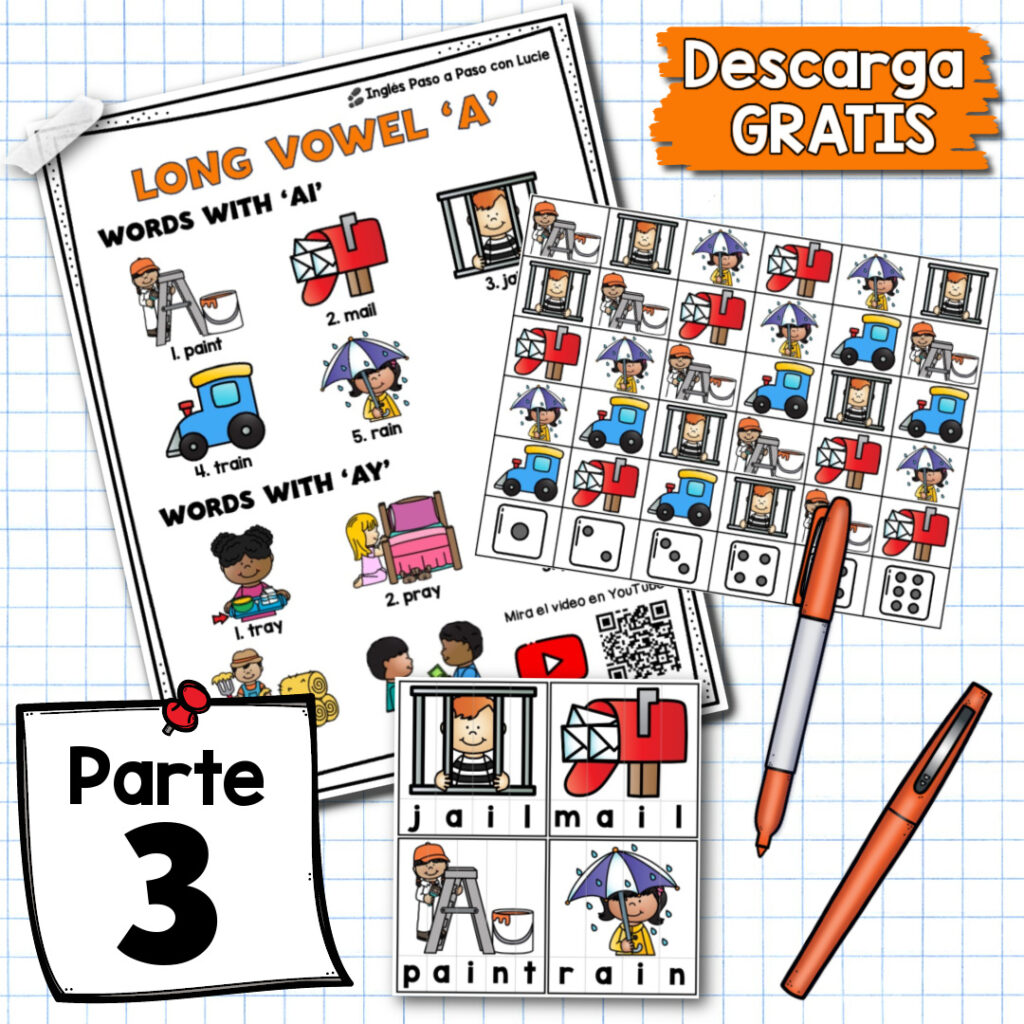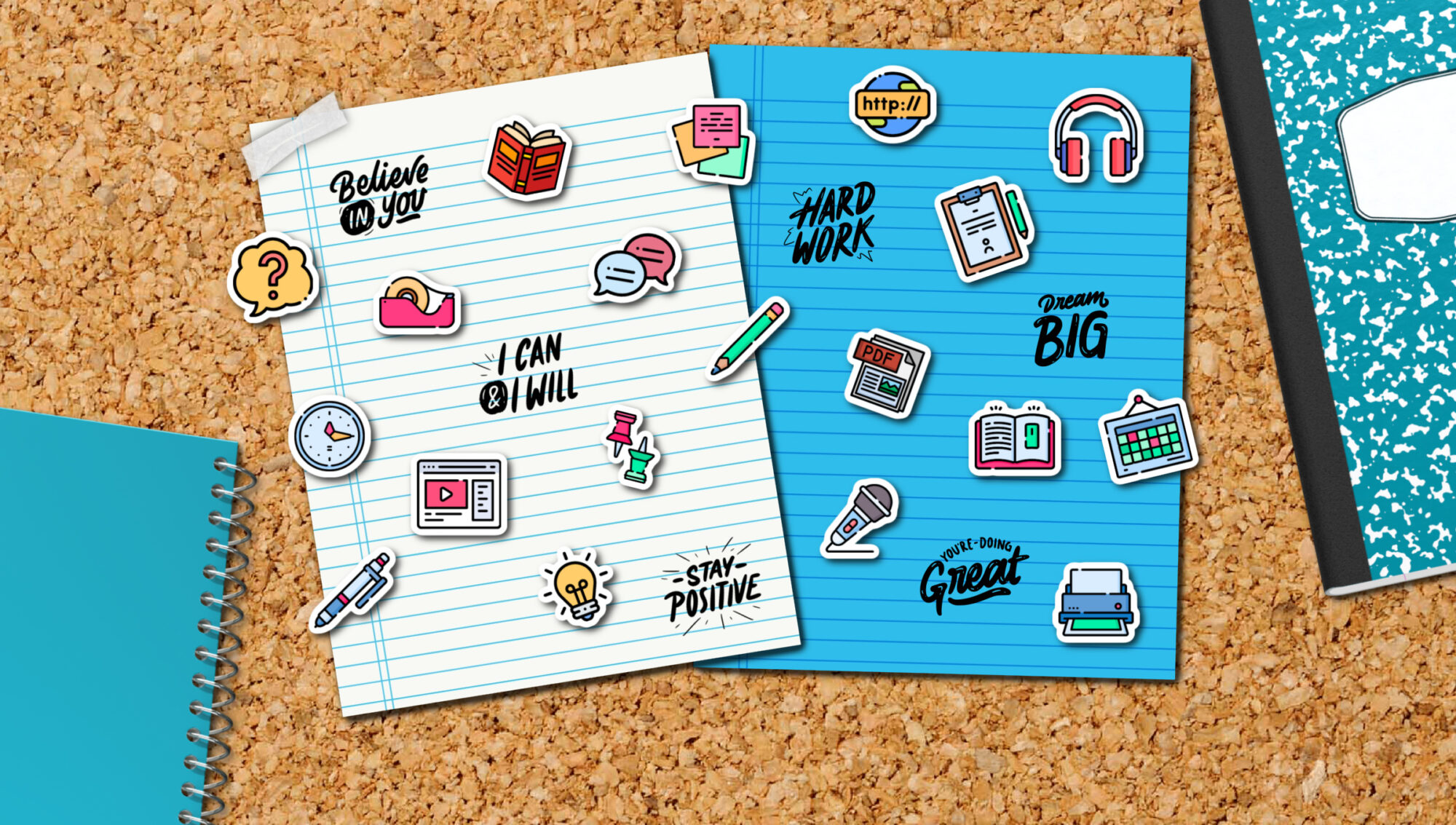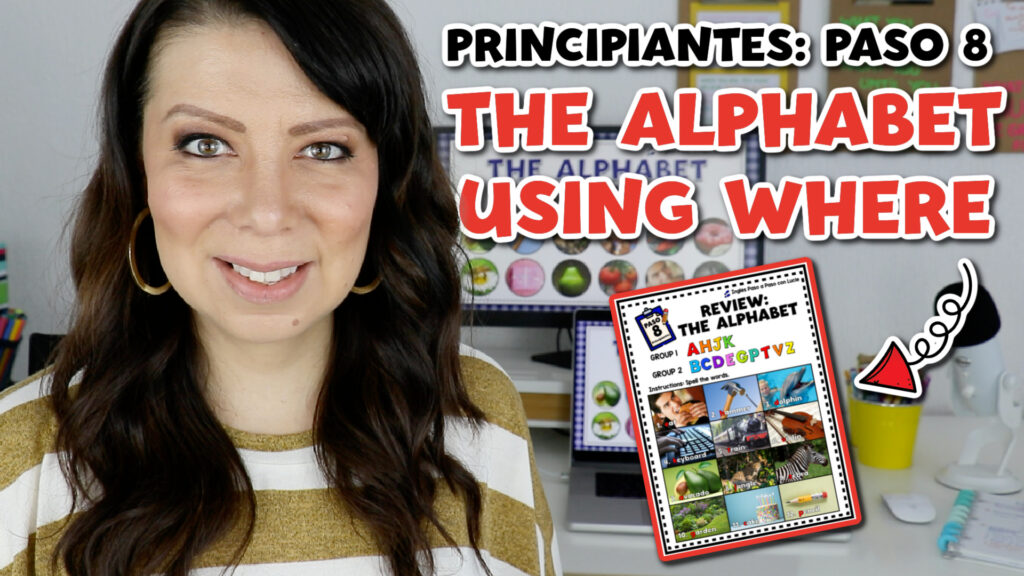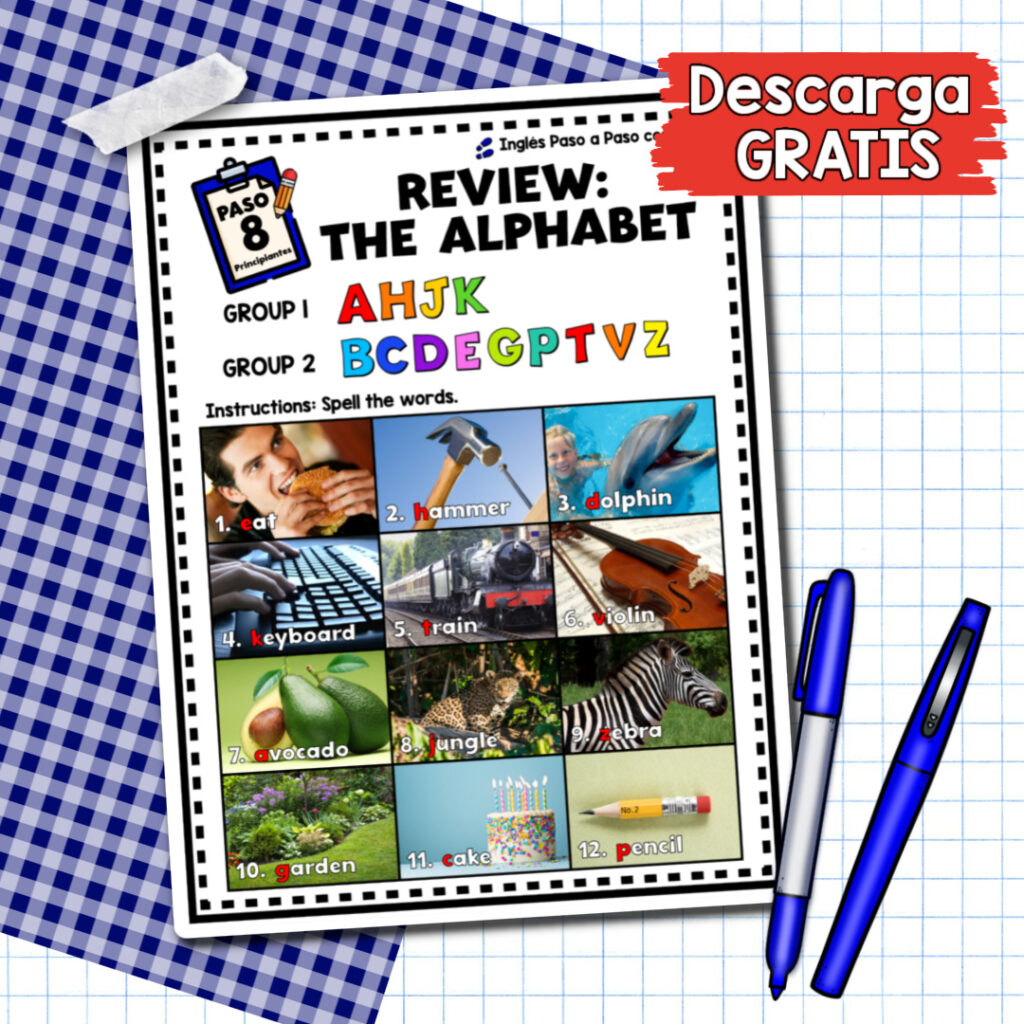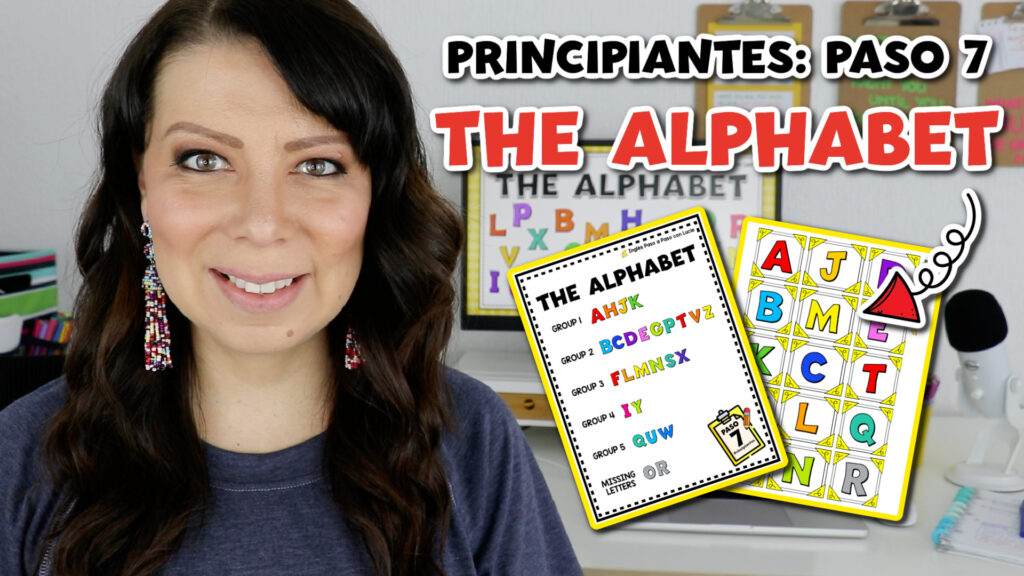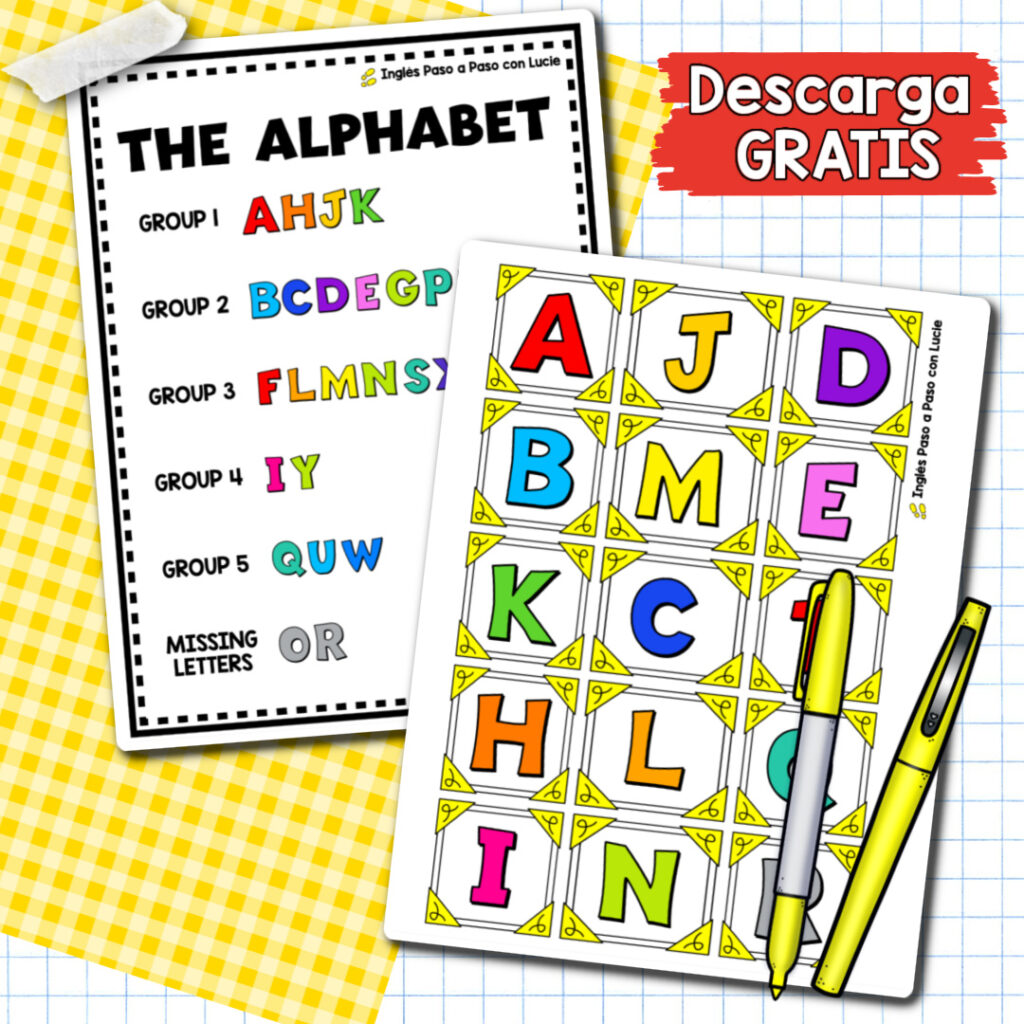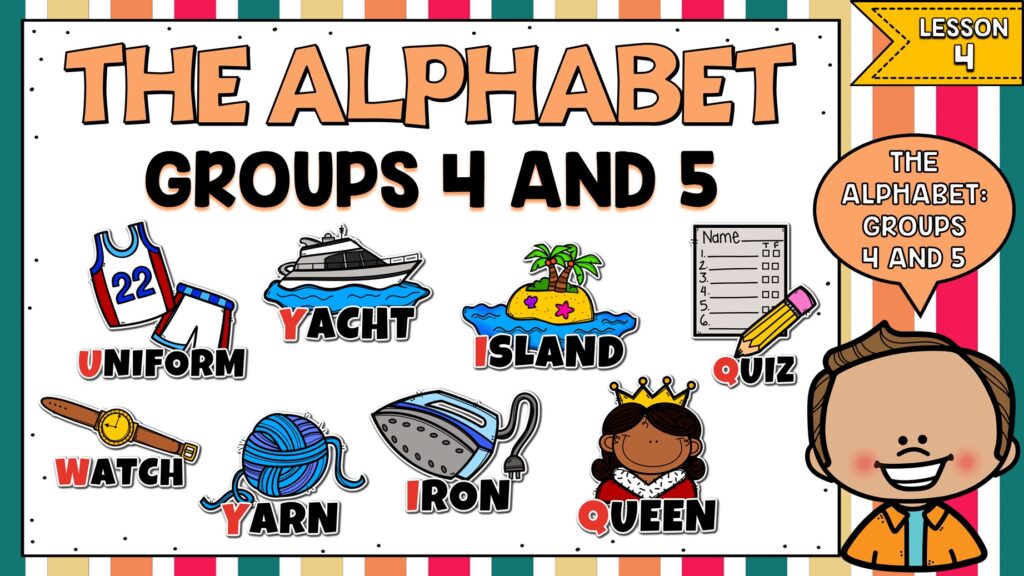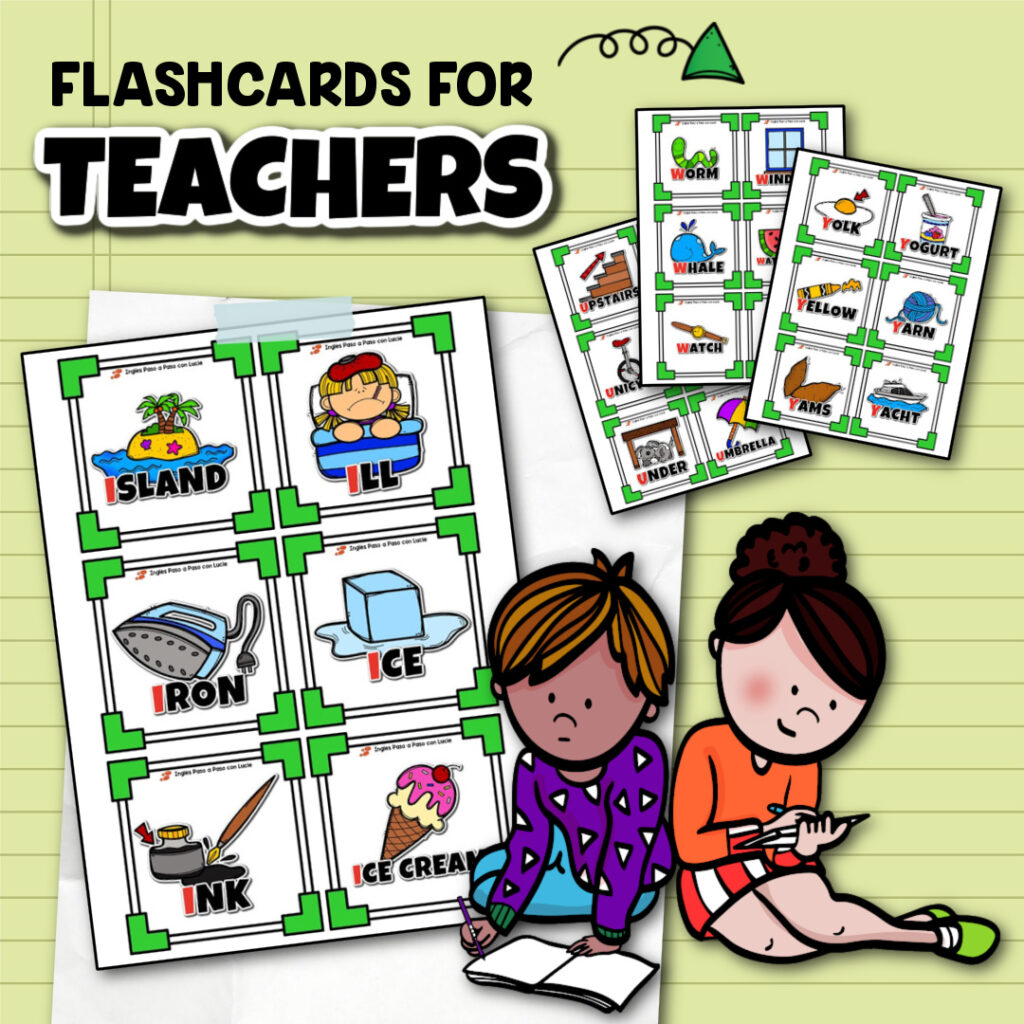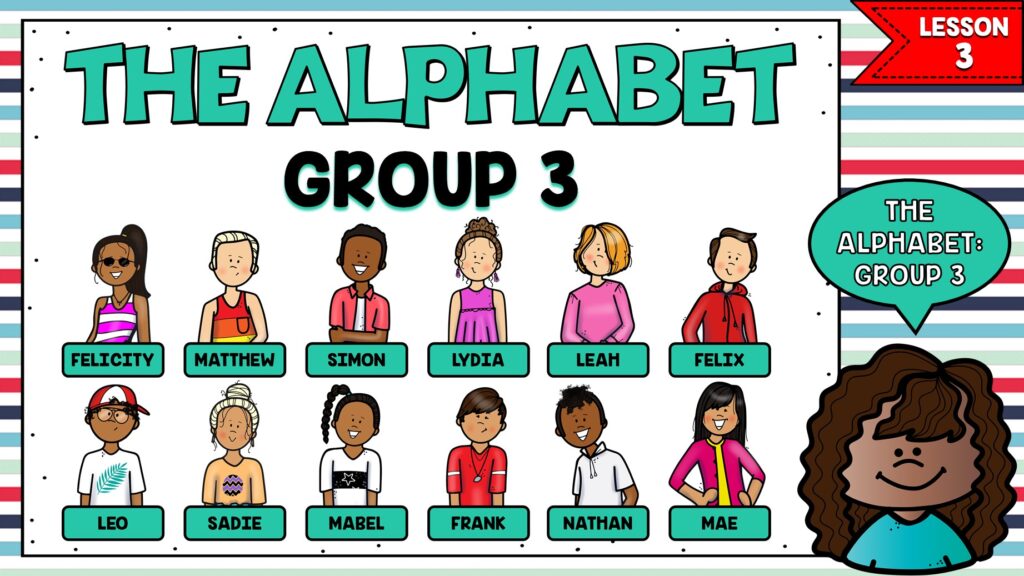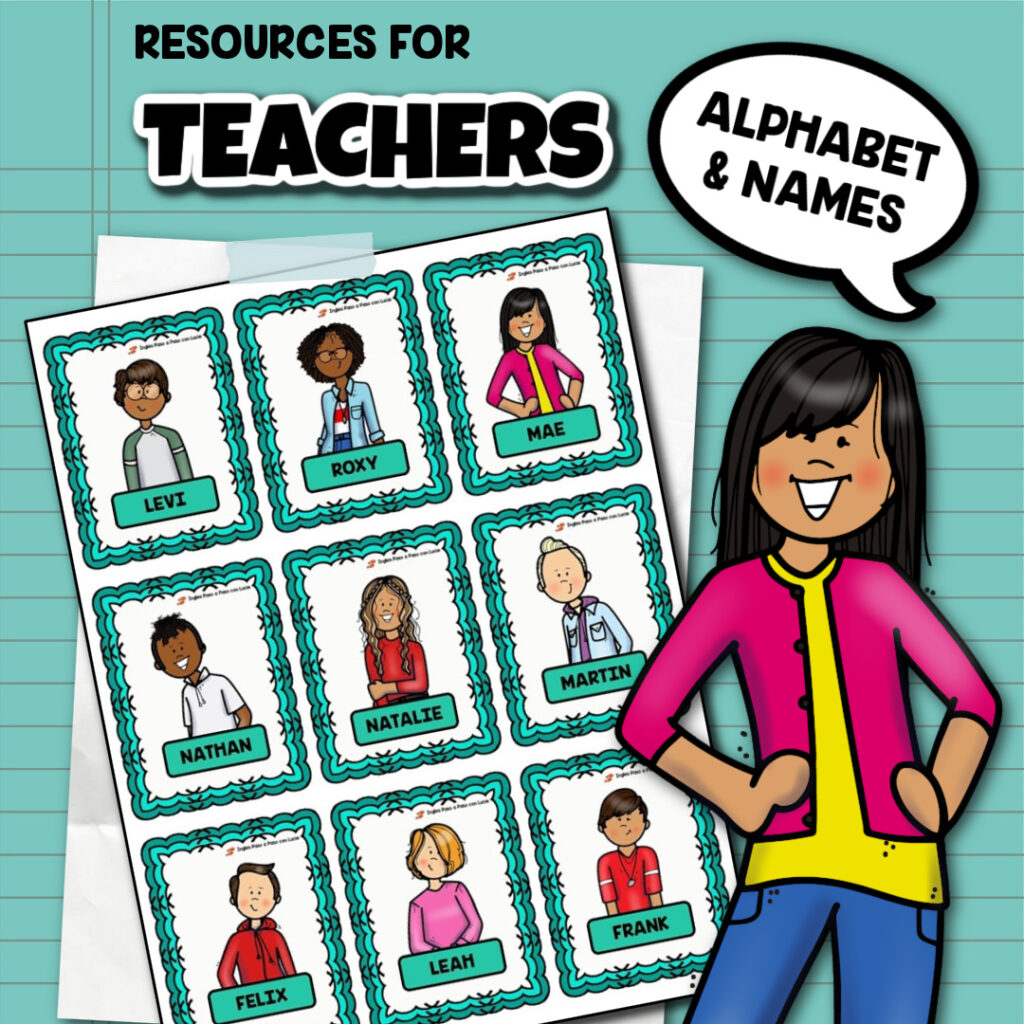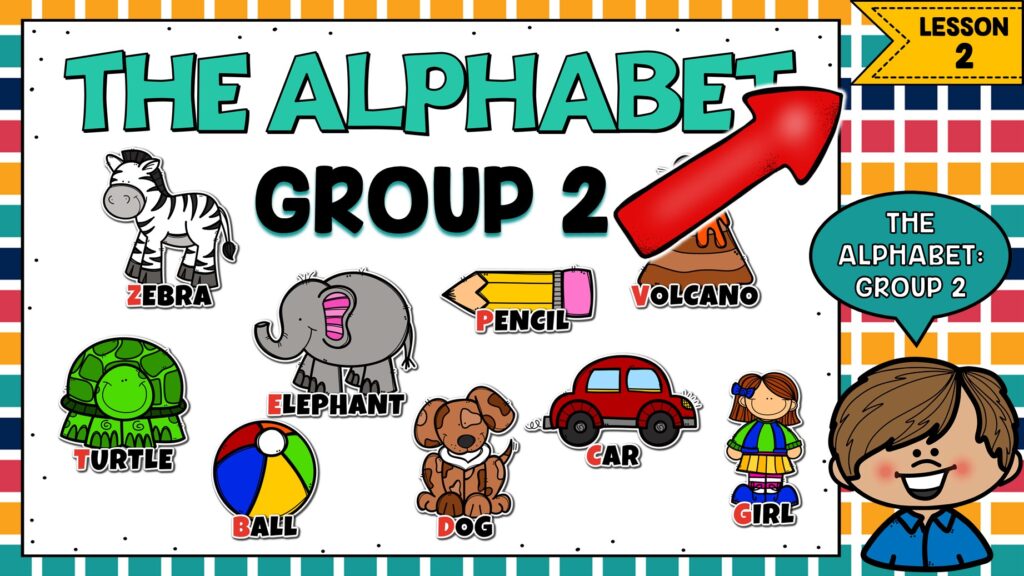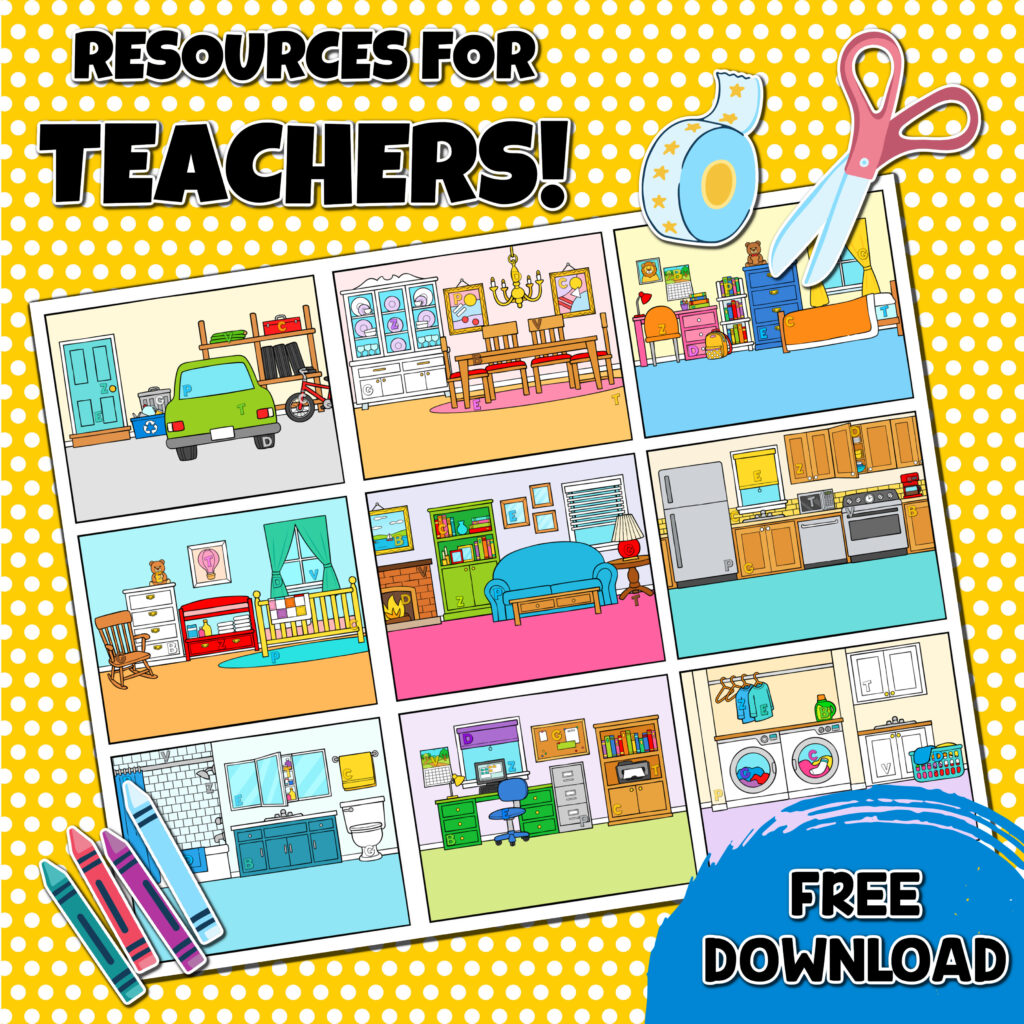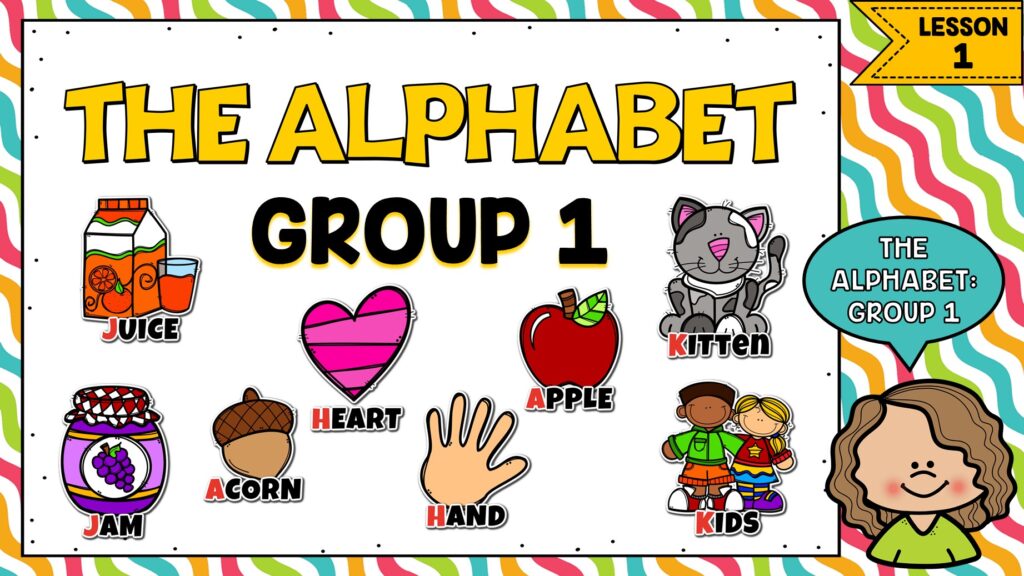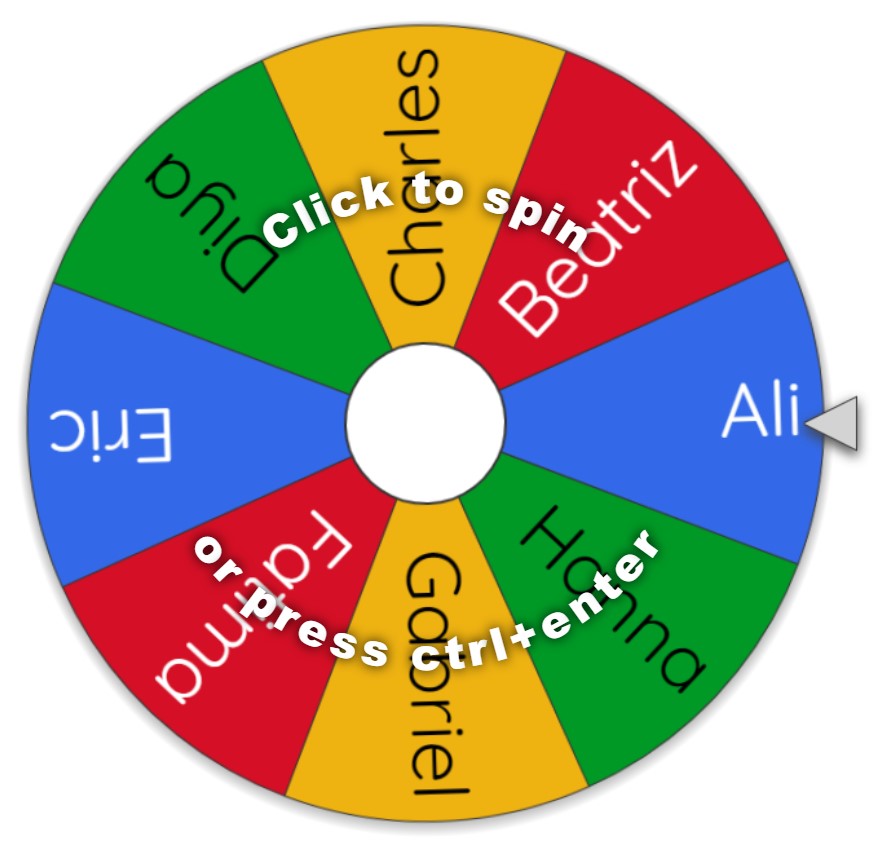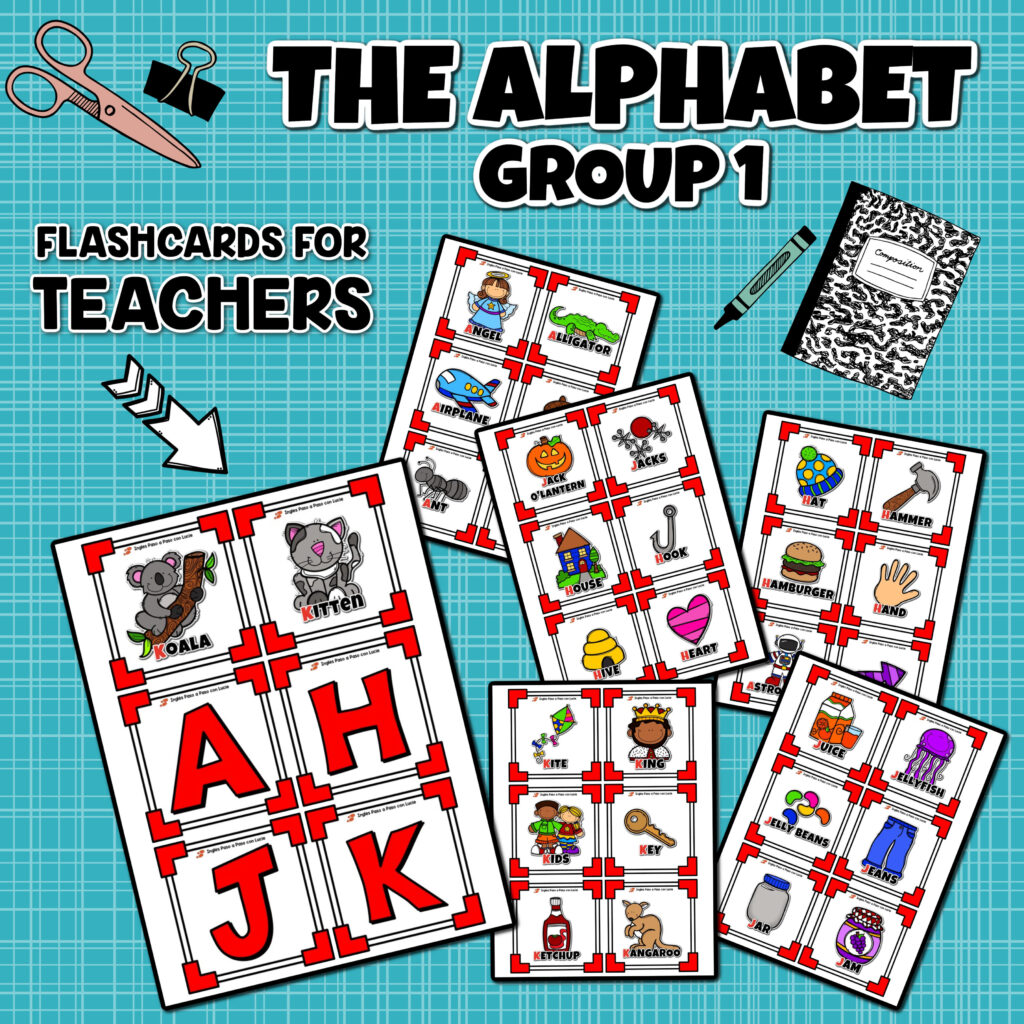En esta serie de lecciones aprenderás todo lo relacionado con el abecedario en inglés. Empezaremos aprendiendo el nombre de las letras, y las usaremos para practicar tu pronunciación, también haremos ejercicios de escucha, aprenderás vocabulario nuevo, y desde ya empezamos a aprender diálogos para que te comuniques en inglés.
Parte 1

Guía de Estudio:
Haz clic AQUÍ para descargar el archivo PDF.
Haz clic AQUÍ para hacer una copia del archivo de Google Slides.
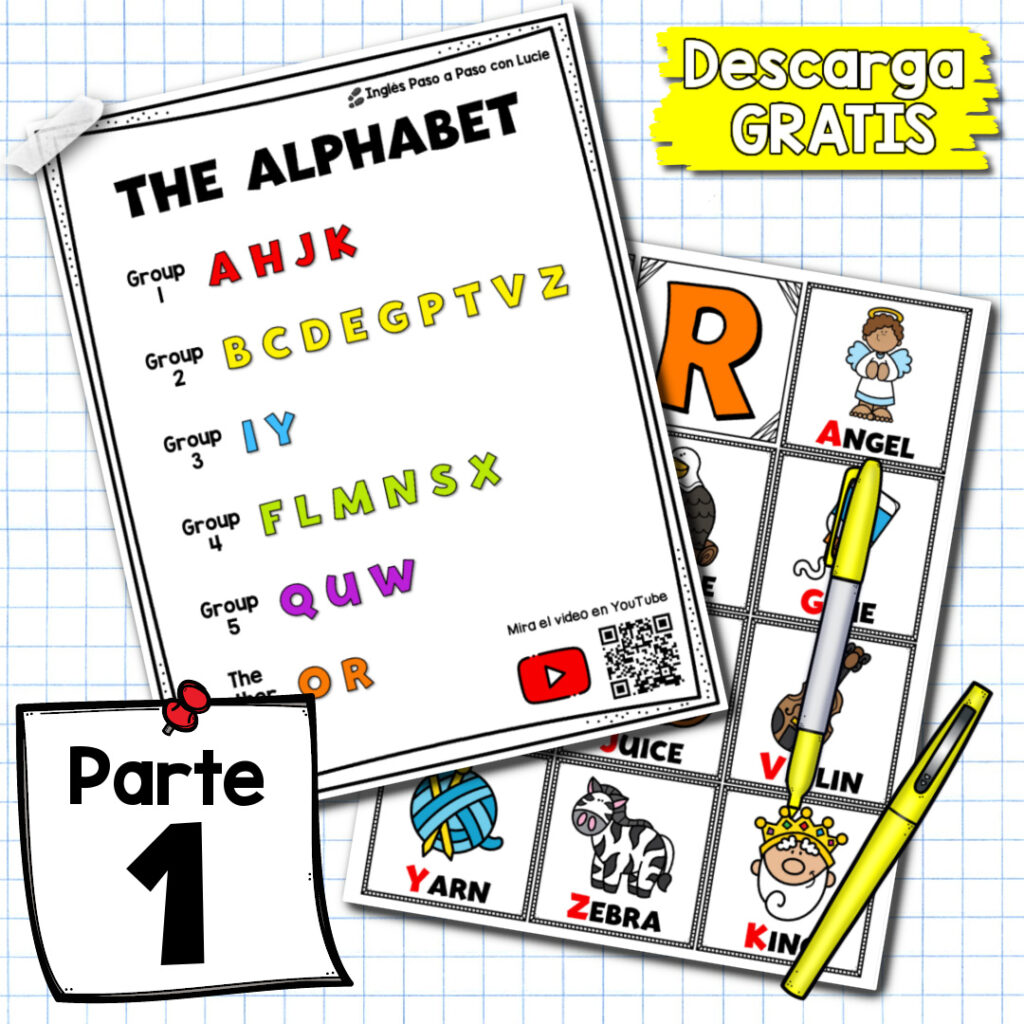
Parte 2
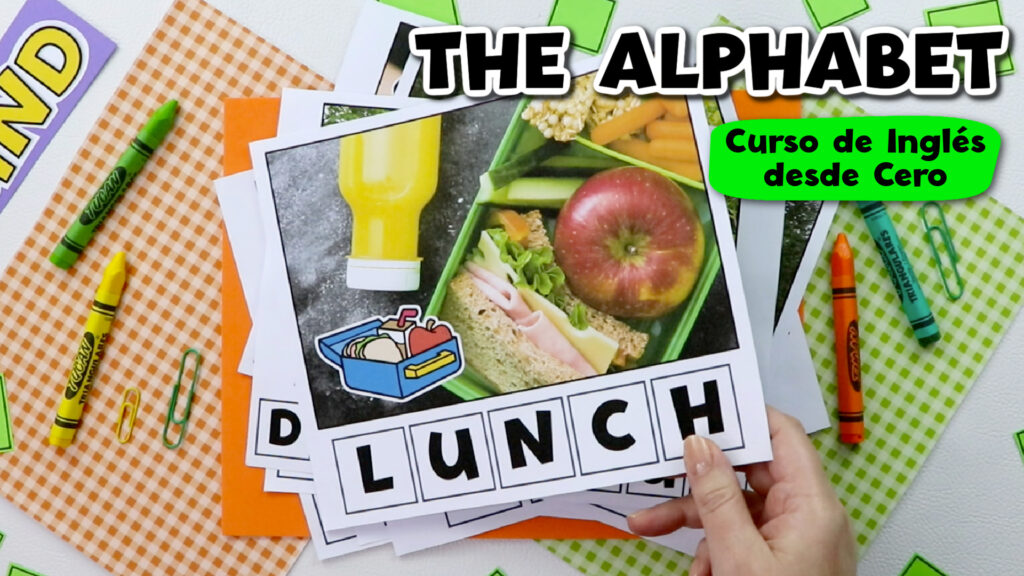
La guía de estudio de esta lección es la misma que la lección anterior. Pronto te estaré compartiendo las tarjetas con vocabulario para que puedas seguir practicando. Pero por ahora, puedes seguir usando la misma guía de estudio.
Fonética en Inglés: Phonics
Como parte de nuestro estudio del abecedario en inglés vamos a estudiar la fonética, conocida en inglés como ‘phonics’. Te enseñaré los sonidos de las letras y sus combinaciones, lo cual es esencial para mejorar tus habilidades de pronunciación, lectura, y escritura.
¿Es necesario aprender fonética?
La respuesta corta es sí, especialmente si estás aprendiendo inglés como segundo idioma. A continuación, te presento algunas de las principales ventajas de incorporar el estudio de la fonética en tu aprendizaje:
Mejora la Pronunciación
Con un buen entendimiento de la fonética, podrás pronunciar palabras de manera más precisa. Esto es especialmente útil para personas cuyo idioma nativo tiene sonidos muy diferentes al inglés.
Aumenta la Comprensión Auditiva
El estudio de la fonética no solo mejora tus habilidades de producción del habla, sino que también te permite entender mejor lo que escuchas, contribuyendo a una mejor comprensión auditiva.
Facilita la Lectura y Escritura
Comprender la relación entre los sonidos y las letras te permitirá descifrar nuevas palabras más rápidamente, lo cual es esencial para mejorar tus habilidades de lectura y escritura.
En resumen, la fonética es una herramienta invaluable para cualquier persona que esté aprendiendo inglés. Ofrece múltiples beneficios que se reflejan en todas las áreas del uso del idioma, desde la pronunciación y la lectura hasta la comprensión auditiva y la comunicación efectiva.
Parte 1: La ‘E’ Silenciosa – Silent ‘E’
La “Silent E” al final de una palabra generalmente hace que la vocal que está antes en esa palabra suene como su nombre en el alfabeto.
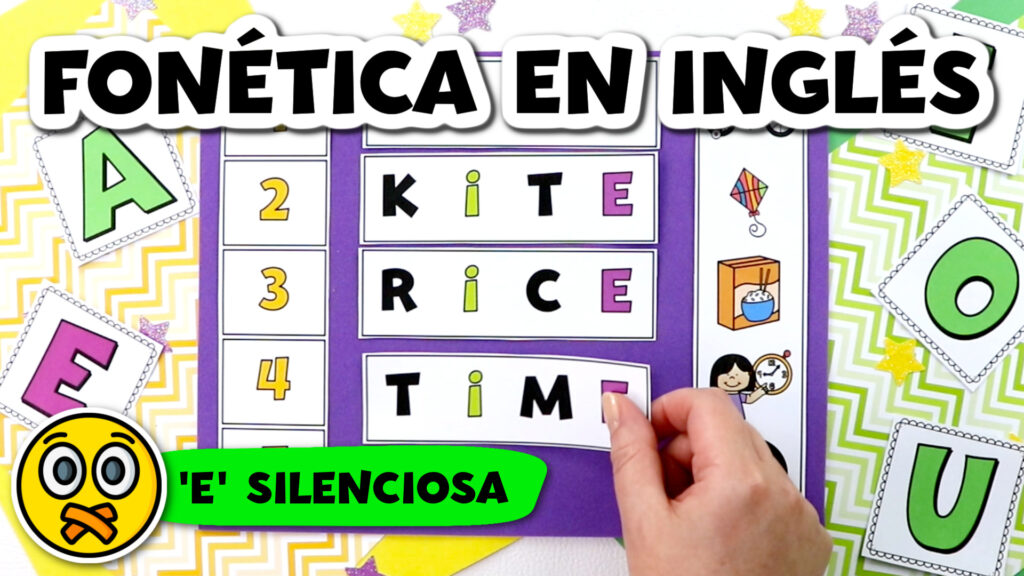
Guía de Estudio:
Haz clic AQUÍ para descargar el archivo PDF.
Haz clic AQUÍ para hacer una copia del archivo de Google Slides.
Tarjetas y Material Didáctico:
Haz clic AQUÍ para descargar el material didáctico.
Haz clic AQUÍ para hacer una copia del archivo de Google Slides.
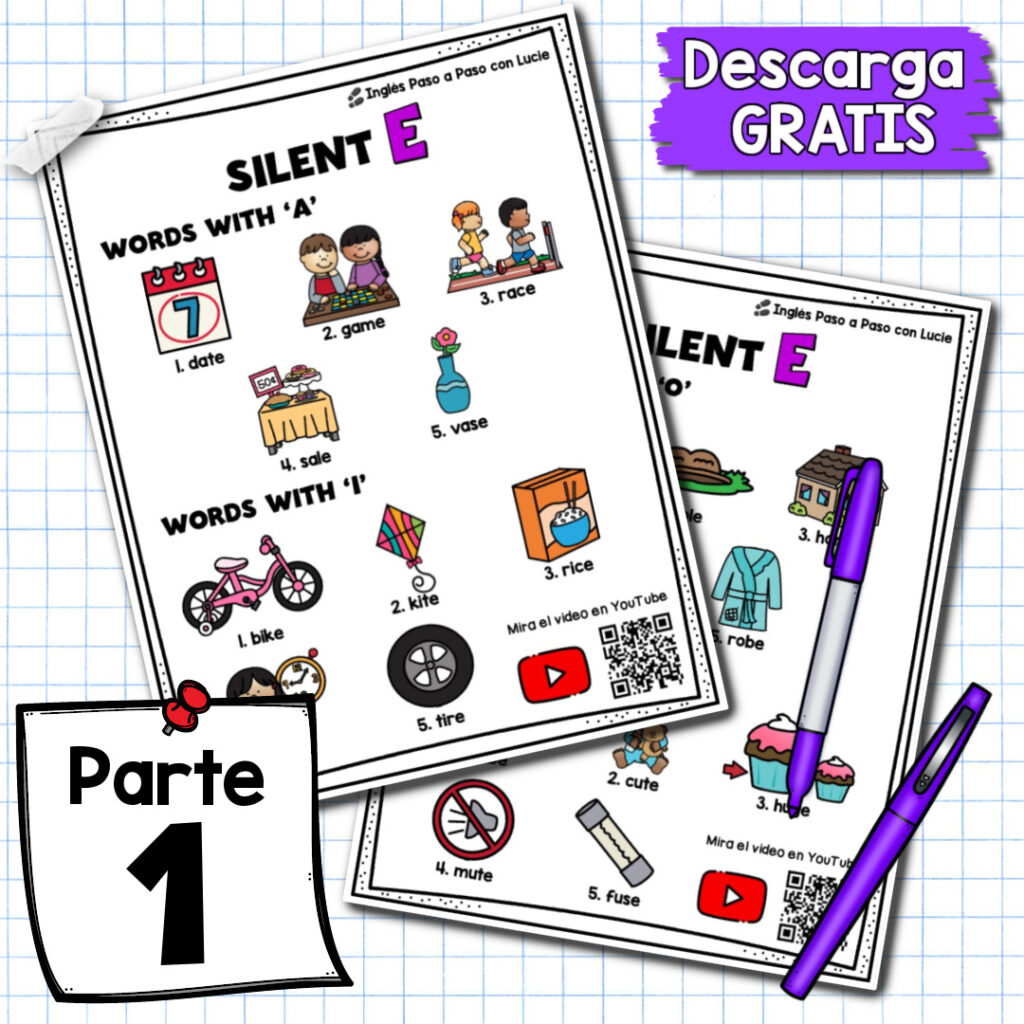
Parte 2: Vocales Cortas – Short Vowels
Esta lección es una guía completa para principiantes sobre las vocales cortas en inglés. Empezaremos explorando los sonidos fundamentales de las vocales cortas ‘a’, ‘e’, ‘i’, ‘o’, ‘u’, y aprenderemos a distinguirlas de las vocales largas. Descubrirás palabras clave para practicar la pronunciación y reforzarás tu comprensión con ejercicios de escucha y escritura.
Lo que aprenderás:
- La diferencia entre vocales cortas y largas.
- Pronunciación clara de palabras comunes con vocales cortas.
- Ejercicios interactivos de escucha para agudizar tu comprensión.
- Actividades de escritura para practicar la ortografía y el reconocimiento de palabras.
No olvides practicar regularmente y repetir los ejercicios de pronunciación presentados en este video. La constancia es clave para el éxito en el aprendizaje de un nuevo idioma.
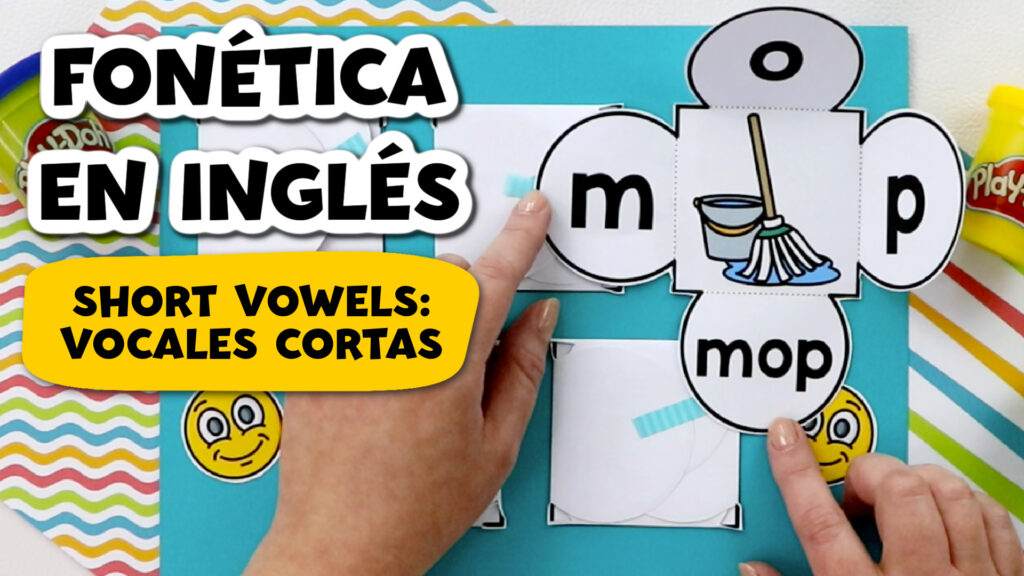
Guía de Estudio:
Haz clic AQUÍ para descargar el archivo PDF.
Haz clic AQUÍ para hacer una copia del archivo de Google Slides.
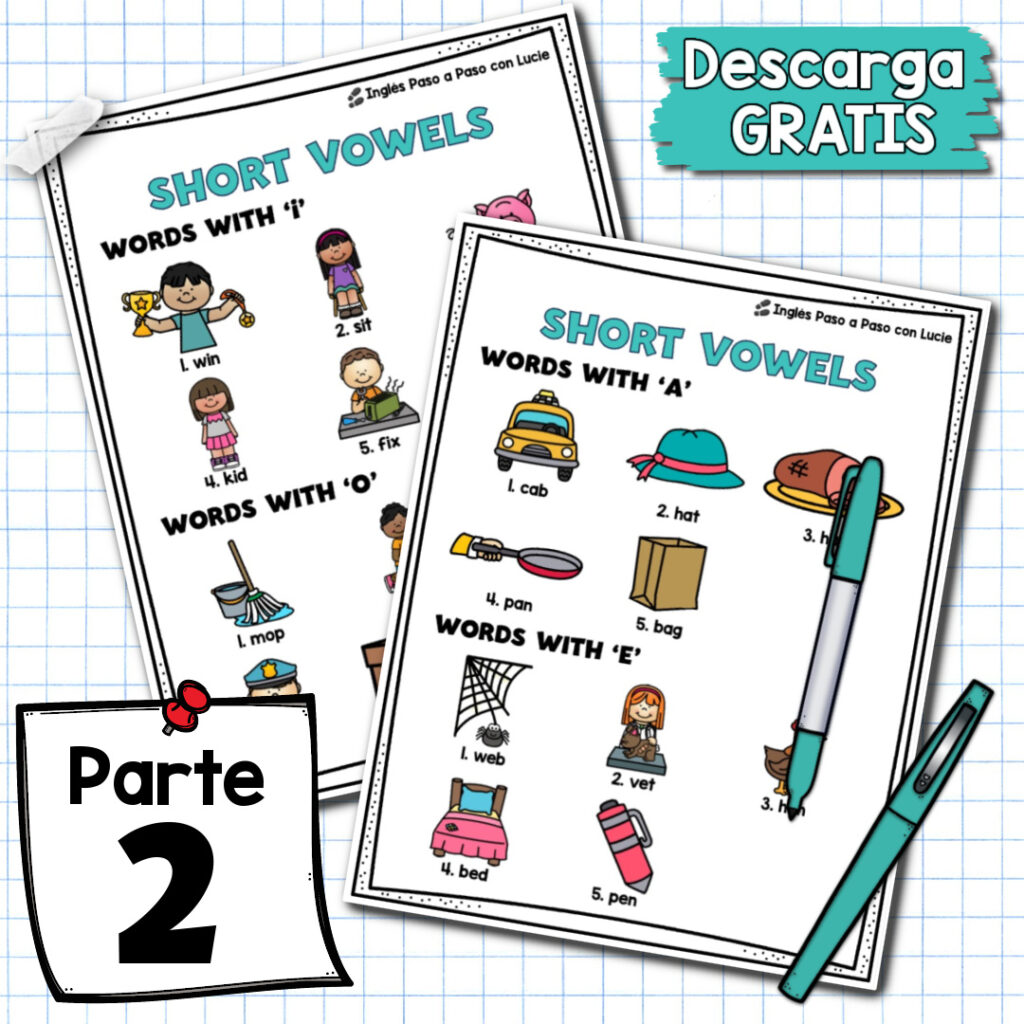
Sonido de las Vocales: ai – ay
En esta lección, exploraremos juntos los sonidos de las combinaciones de vocales ‘ai’ y ‘ay’ en inglés. Estas dos combinaciones pueden ser desafiantes, pero son esenciales para hablar y escribir con fluidez en inglés. A través de ejemplos claros y ejercicios prácticos, te mostraré cómo pronunciar estas combinaciones correctamente.
¿Alguna vez te has preguntado por qué ‘rain’ y ‘ray’ suenan tan similares, pero se escriben de manera diferente? ¿O cómo puedes mejorar tu pronunciación de palabras como ‘train’ o ‘play’? Esta lección es para ti. No solo aprenderás a diferenciar estos sonidos, sino que también ganarás confianza en tu habilidad para usarlos en conversaciones cotidianas y en escritura.
¡Recuerda! La práctica constante es clave para el dominio de la fonética en cualquier idioma. Así que, después de ver el video, te animo a practicar con los ejemplos proporcionados y a experimentar con otras palabras que encuentres.
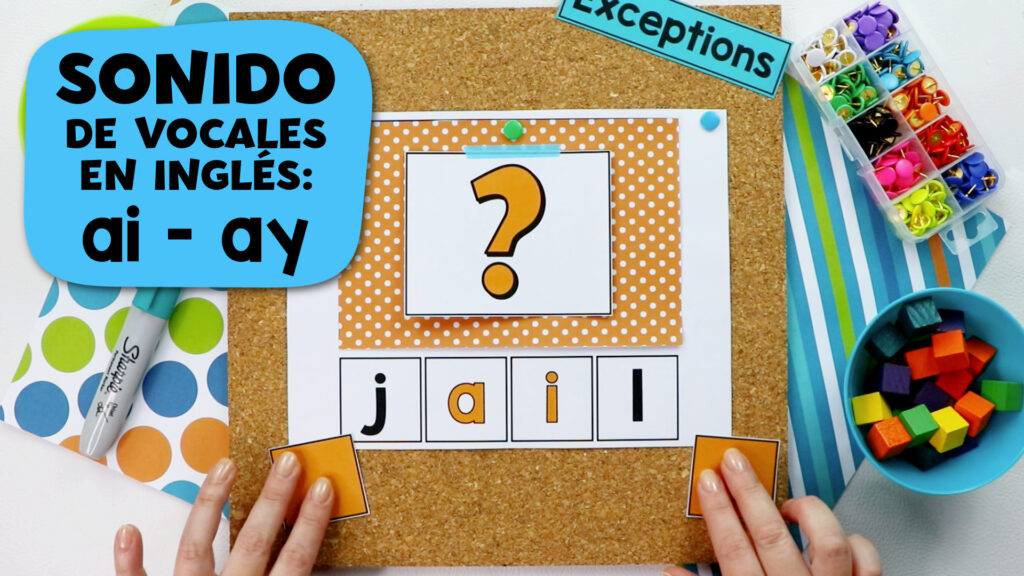
Guía de Estudio:
Haz clic AQUÍ para descargar el archivo PDF.
Haz clic AQUÍ para hacer una copia del archivo de Google Slides.
